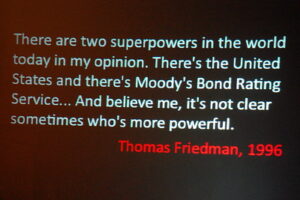The COVID-19 pandemic was particularly effective at reducing community college enrollment. A new study that examined the impact of COVID-19 on the California community college system showed that enrollment declined as much as 20% between 2019-20 and 2020-21. With numbers like that, community colleges all over (not just in California) will be rebuilding enrollment for some time to come.
To no one’s surprise, the pandemic had a devastating effect on community college enrollment by Hispanic and Black students. Community colleges will likely feel these impact for semesters, if not years. The student population often determines institutional funding. So, when students leave, their funding goes with them.
That’s why it is imperative for community colleges to recruit new students. It is also important to recognize that time is of the essence. Myriad studies have shown that students who “take a break” from college almost never come back. Additionally, students who come from the poorest neighborhoods are the ones most likely to skip college.
Rebuilding community college enrollment
Recovering from the pandemic will not be a case of simply opening classroom doors and getting back to business. Community colleges will need to make an extended effort to reach students who never enrolled, dropped after 1 semester or hit the “pause” button on their higher education plans.
In other words, it’s going to take more than a tired marketing campaign to move students back into the classroom. (Side note: I’ve never quite appreciated the current (decade-long) marketing campaign.)
What do you call someone who graduated from WCC? Employed.
Isn’t that what’s supposed to happen when someone graduates from college? As a student, if I invested in a WCC education, getting a job afterward would be my minimum expectation. And the current data show that post-graduation expectation isn’t being met for a large proportion of WCC’s students.
(Truth-in-advertising is still a requirement, isn’t it?)
So, maybe – just maybe – it’s time for a more intelligent, targeted approach to reengage the students who left. Or never enrolled.
And rebuilding community college enrollment is going to take more than words. It’s going to take a lot of support to find and re-engage those students. A recruitment campaign has to provide options for adult learners, too. Many women left the workforce during the pandemic, and they may want to re-skill before going back to work. A high proportion of Black and Hispanic students bypassed post-secondary education. Students in low-income households also dropped out in high numbers. Any recruiting campaign will need to address their needs.
If I were on the Board of Trustees, I’d be asking for explicit details regarding the Administration’s plan to find and re-engage these students. Significant elements of WCC’s overall revenue picture over the next several years depend on headcount. I would insist the WCC Administration do more than wring their hands and trot out a decrepit marketing campaign.
Photo Credit: COD Newsroom , via Flickr


























